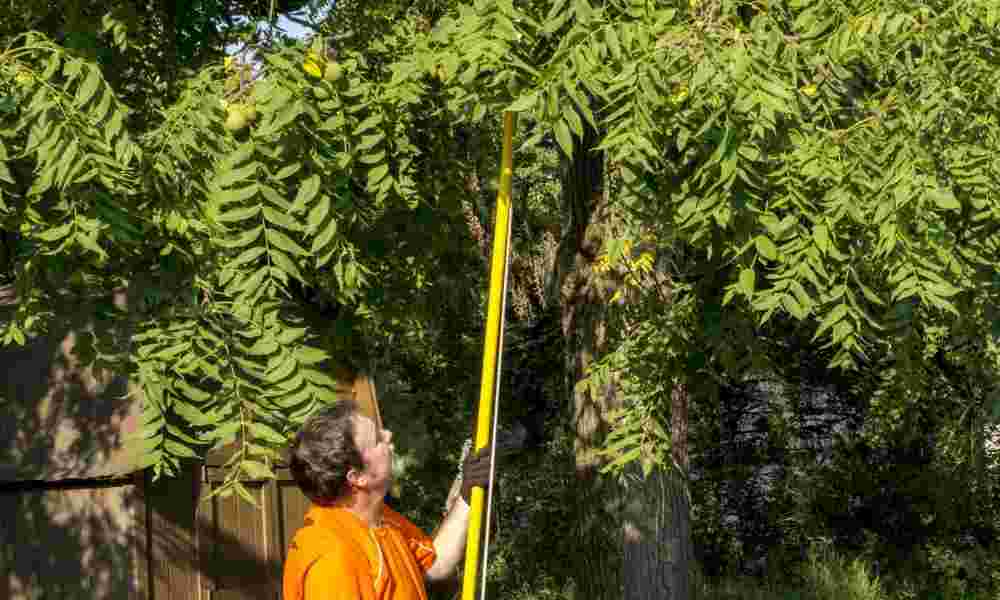It may seem harmless or even nice to have tree branches hanging over your house. It may seem as though the branches provide extra protection to the home and further shelter your roof.
However, having tree limbs over your house can pose problems for the conditions of your roof, and may even be hazardous.
Here are some reasons to be concerned about tree limbs over your house:
Physical damage to the roof
On windy days, swaying branches may scrape against the roof of your house, damaging shingles, asphalt, or gravel on the roof.
Fostering moss and mildew
As leaves fall onto your roof, or create a moist, shady environment, they can contribute to moist conditions that are ideal for moss, fungi, mildew, and other damaging organisms to grow on your roof.

Clogging the gutters
While leaves in roof gutters are inevitable when you enjoy trees in your landscape, when branches overhang your roofline, then fallen leaves, twigs, and other tree debris can quickly clog your gutters. When your gutters aren't working properly, you are at greater risk for erosion and water damage.
Giving access to wildlife
Tree branches that overhang a roof give easy access to squirrels, raccoons, and other animals that may enjoy living in your attic or walls.
Risk of tree branches breaking and falling on your house
The most dramatic risk of having tree limbs over the roof of your house is that during a storm, large branches or limbs may break and fall onto your roof, causing serious damage to your roof and perhaps even to your home.
While some tree-related risks to your home may be fairly serious, it isn't always practical or desirable to remove the tree entirely. For example, the tree may be on a neighbor's property, or contribute to the value and aesthetics of the landscape. You may need to simply cut the branches that are overhanging your roof and allow the rest of the tree to grow and thrive.



How to Cut Tree Limbs Over a House?
If you have tree limbs that extend over the roofline of your house, it is probably a good idea to remove them. Here is how to do it:
Determine whether you can do the job safely
No matter what tools you are using as you trim a tree, you need to be sure of your own safety. Here are some common things to check for:
Your footing
If your roof is steep, slippery, wet, or has any surface that will prevent you from having a stable, secure footing, then hire a professional to remove the tree.
Your ability to use the tools
Never have your first experience using a tool be from a height in an unfamiliar situation. Whether you are using pruning shears, a chain saw, or a pole saw, make sure that you are extremely comfortable safely using your tools before you get onto your roof.
The weight limit of your ladder
Remember that you will need to carry any and all tools up the ladder with you, so be mindful of safe use and weight limits on your ladder.
The size of the tree branch
Tree branches can be surprisingly heavy, and you need to prevent them from falling when cut and landing on your roof. Most homeowners who have experience with their tools can safely manage a tree branch that is 2-3 inches in diameter. If the branch is much larger than that, consider hiring a professional.
Have a buddy
Having another adult with you helps provide additional safety and gives you an easier way to clear debris as you go.
Determine how to trim without harming the tree
Some species are best trimmed in spring, others in fall. Research how to trim your species of tree without harming the health of the tree and creating more hazards down the road.
Cut in sections, not the entire branch at once
Tie a rope around each piece of the tree to be cut, making a series progressive cuts from the end of the branch toward the trunk. Ensure that every cut piece is held by the rope, and not allowed to fall onto your roof. Use your friend to hold the rope while you make cuts, and to help safely clear debris before making the next cut.
FINAL VERDICT
By working carefully, in manageable sections from the end toward the trunk, you should be able to clear the tree branch from your roofline using your pole saw.
